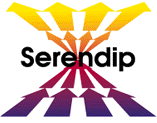 's Diversity and Discovery Institute.
's Diversity and Discovery Institute.
Follow us as we discover diversity. Join us at
 's Diversity and Discovery Institute.
's Diversity and Discovery Institute.
Nora A. Kasper- Environmental Science Teacher @ Father Judge High School
Luci G. Ryan- Math Teacher @ AMY NW Middle School
 ... from http://www.edf.org/pubs/Brochures/GlobalWarming/b_pastclimates.html
... from http://www.edf.org/pubs/Brochures/GlobalWarming/b_pastclimates.html
We have planned a lesson on global warming. This lesson will show how Math and Science can be integrated and taught to a diverse group of students. It's focus is primarily directed to multiple intelligences in the classroom. Following is a brief description of the models included in our lesson:
Linguistic Intelligence:These students are sensitive to the sounds, structure, meanings, and functions of words and language. Some examples of activities are oral reports, storytelling and writing in the form of prose or poetry.
Logical-Mathematical Intelligence:These students have the sensitivity to and capacity to discern, logical or numerical patterns and the ability to handle long chains of reasoning. Some examples of activities are the use of calculations on charts and graphs, computers, experiments, and the use of logical patterns and relationships.
Spatial Intelligence:These students have the capacity to perceive the visual-spatial world accurately and to perform transformations on one's initial perceptions. Some examples of activities are interior decorating, expressive arts, guided imagery, mind mapping, and inventions.
Bodily-Kinesthetic Intelligence: These students have the ability to control one's body movements and to handle objects skillfully. Some examples of activities are role playing, crafting, use of mechanics, surgery, and athletics.
Musical Intelligence: These students have the ability to produce and appreciate rhythm, pitch, and timbre; appreciation of the forms of musical expressiveness . Some examples of activities are humming, singing, music performances, and instrumental and environmental sounds.
Interpersonal Intelligence: These students have the ability to perceive and make distinctions in the moods, intentions, motivations, and feelings of other people. Some examples of activities are giving and receiving feedback, cooperative learning strategies, and group projects.
Intrapersonal Intelligence: These students are able to access their feelings and have the ability to discriminate among their emotions and have a working knowledge of their strenghts and weaknesses. Some examples of activities are emotional processing, " know thyself" practices, higher-order reasoning, and complex guided imagery.
For more information on learning styles
Here is a valuable set of web links on differences in learning styles.
Resources On Multiple Intelligences.
.http://serendipstudio.org/sci_edu/cook-sather.html
Resources on Global Warming. Global Warming: A Special Report, from the New Scientist magazine .... with lots of links to additional information
This site has learning activities that are practical to use in the classroom.
These are some science and math resources for teachers.
A LESSON ON URBAN HEATING
Objectives:
This lesson will introduce students to new tools in geography, math and science in order to make observations and draw conclusions about local temperature variations.
Materials:
Introduction:
Give students the thermometers to take home to record daily temperatures of the air in their backyards . Make sure that all students are taking the temperature at the same time. Some questions that you may ask your students to think about.
Body:
On poster or sheet of paper students will print their name and address in the appropriate columns. Place a star next to each name using as many different colors as possible. The third column on this chart will show the temperatures that the students have recorded.Students will also make individual charts or tables.
Skills Of The Lesson:
Look for these physical characteristics:
Conclusion: Review with class the table of observations and graph. Explain the differences in information that each offers. Which of the two methods used to record observations made it easier to find maximum and minimun temperatures? Why do temperatures seem to be warmer in the evenings in urban areas?
Vocabulary Words :
Evaluation: